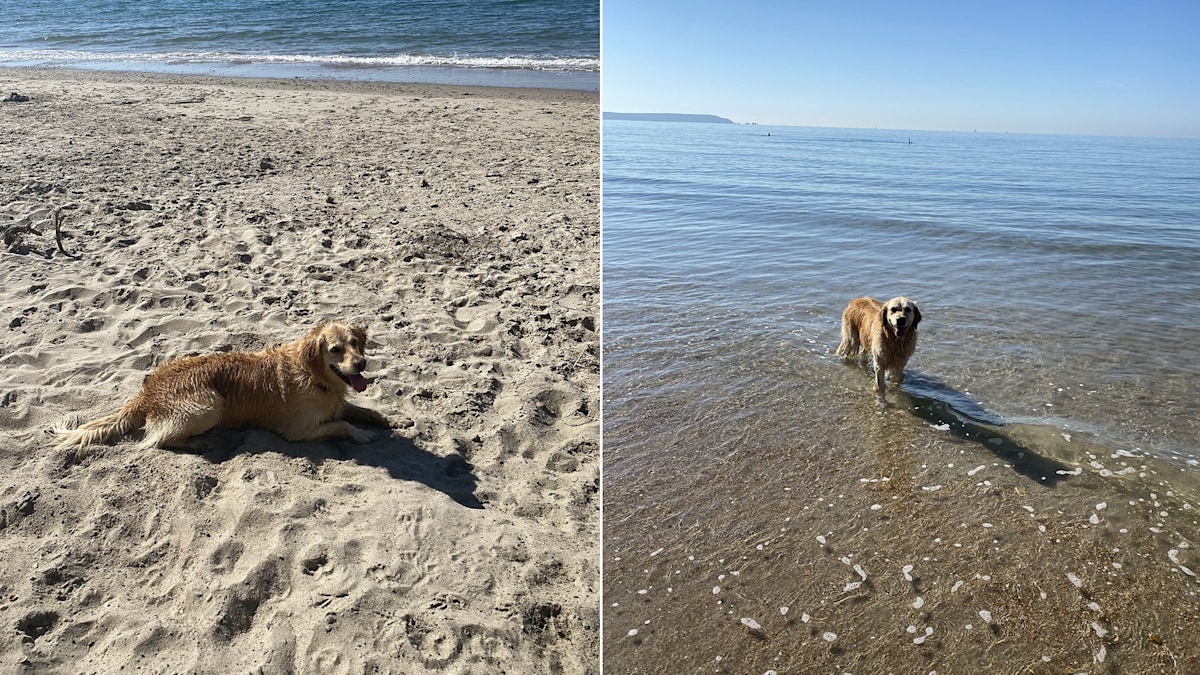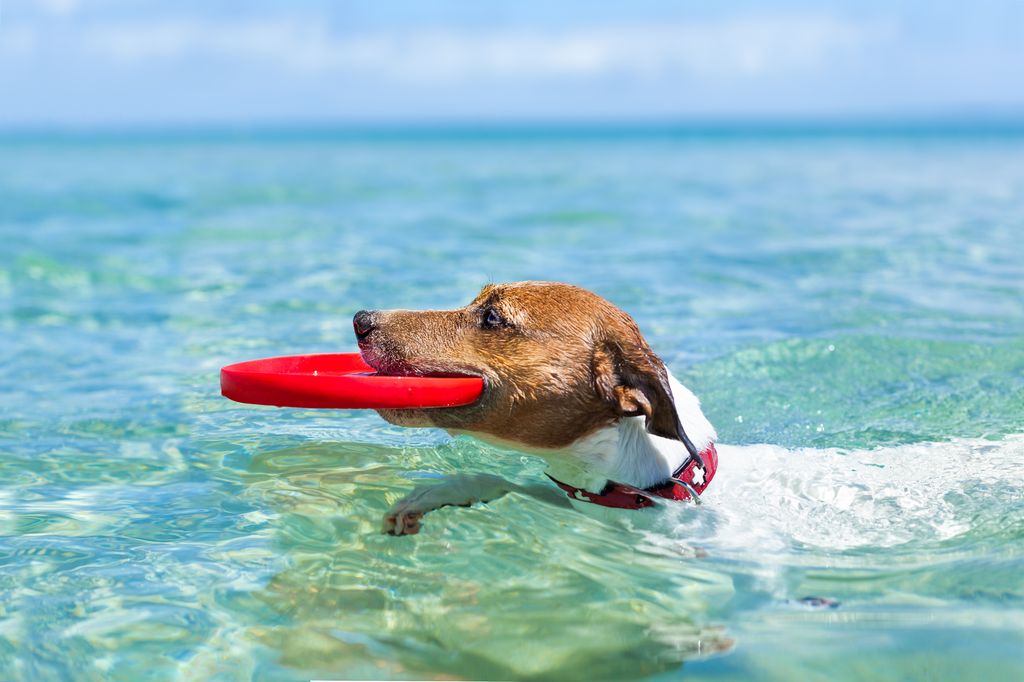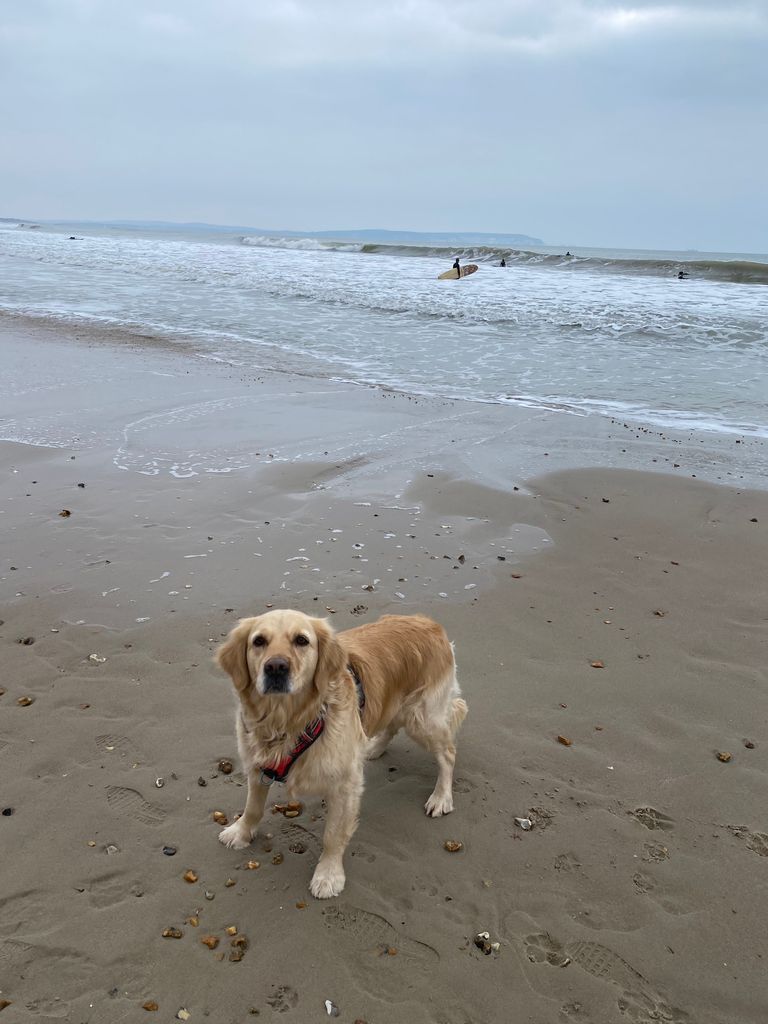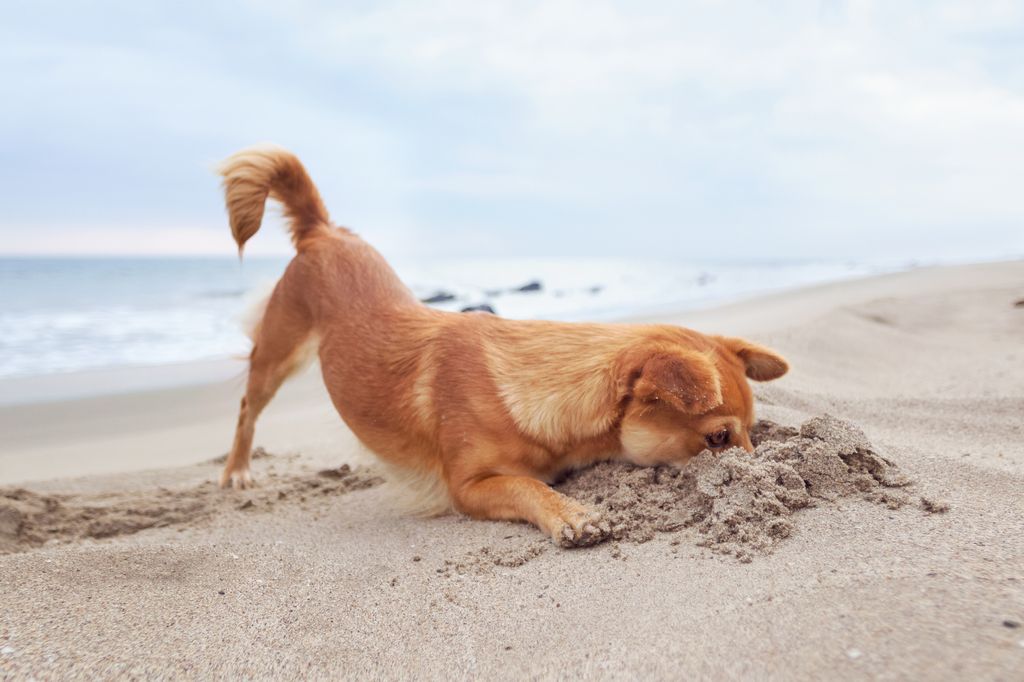Warm weather sees people across the country flock to the coast for a taste of holiday, taking a dip in the sea to cool down or strolling along the sand, and what better companion than your furry friend?
If you have a golden retriever like me, you’ll know some breeds are more excited than others by the sight of the sparkling water (cue a very damp-smelling car trip home with one happy and sleepy pet). But the wholesome day out can quickly turn into a disaster that ends in an emergency vet trip, warned Dr. Rebecca MacMillan.
The vet opened up to pet-sitting platform TrustedHousesitters about some deadly hazards you need to be aware of, whether the pooch belongs to you or you’re dog-sitting for a friend.
Luckily, temperatures seem to be in the balmy early 20s this weekend, a welcome relief from the soaring mid-30s of the past few weeks. But heatstroke isn’t the only danger lurking by the shore…
Heatstroke
If the sun is warm enough to require suncream and a hat for you, it’s too warm for your dog.
Heatstroke is one of the most obvious risks during the heat of the day, so Rebecca recommends visiting the beach in the morning or evening when the weather is cooler.
“Some breeds will be much more prone to heatstroke, including brachycephalic or flat-faced types like pugs and bulldogs, as well as large or giant breeds with thick coats,” she said.
Rebecca said owners should encourage dogs to spend time in the shade and drink plenty of water.
Sand and saltwater consumption
Speaking of drinking water, it’s important you carry fresh water with you to avoid dogs turning to ocean water to quench their thirst.
One of the biggest risks is ingesting salt water, which can happen out of thirst, curiosity, or by accident while playing.
Veterinarians warn that this can be deadly as the salt can disrupt the balance of electrolytes in the body and cause dehydration, eventually leading to salt poisoning. Ocean water can contain harmful bacteria, parasites, and pollutants that can cause gastrointestinal upset and infections.
“Impaction is also another risk for dogs that make a habit of ingesting sand,” said Rebecca. “Too much sand in your pet’s digestive tract can cause a painful obstruction, which may require surgery.”
Strong currents
Ocean currents can change very quickly, and it’s hard to tell what the sea is doing beneath the surface. Keep your dog close and avoid allowing them to swim for too long and too far from shore, as exhaustion can lead to drowning.
“Factor in your dog’s swimming ability, too. If your pet is elderly, young, or debilitated, then it is not sensible to allow them to swim out of their depth,” she warned.
Marine life
Even if they’re not in the water, the beach poses hidden risks. Marine life can wash up on the shore, including jellyfish and harmful algal blooms.
“Jellyfish stings can occur in the water or on land, especially if your pet is the inquisitive type. Stings can range in severity from mild irritations to anaphylactic reactions,” she said, before urging owners to seek urgent veterinary care if a sting occurs.
Unsupervised digging
Exploring new environments and scents enriches your dog’s mental health, but fishing hooks, broken bottles, discarded food, and sharp objects hidden in the sand can be extremely dangerous for dogs, especially when ingested.
Pet owners are urged to inspect the area where their dogs will be playing, including any barbecues nearby.
“Barbecues are common at the beach in the summer months, so ensure your pet doesn’t scavenge around people’s leftovers or litter. While people should dispose of hot coals responsibly, there are regular stories of people or animals burning themselves on discarded barbecue embers,” she explained.
Open holes
Dogs aren’t the only ones who like to play in the sand; children and adults often enjoy creating holes for beach games, but they can be hazardous for those unaware of their surroundings.
According to Rebecca, they can be a “major trip hazard”, especially when dogs are running at speed, while open holes can also collapse and trap dogs. Watch out for hidden holes and fill in any dips you or your dog make before leaving.
Takeaway lessons? Pack your beach bag with a portable water bowl and fresh water, sunscreen, a dog life jacket and a cooling towel to minimise risks.
Read the full article here









